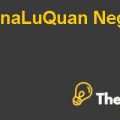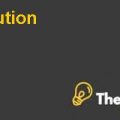
Adaptation of Porter Five Forces Model
Introduction
Porter introduced a framework in 1979 that is used to check the attractiveness of an industry. The framework is recognized as Porter five forces model (Porter, 2008). Porter five forces have an impact on a company’s profitability. Companies can increase their profitability by examining these forces in a positive manner. They can also organize strategies to boost their profitability (See Figure 1 in the appendix). Porter five forces analysis is also recognized as Industry Analysis. It is a structure that is used to inspect the level of competition within an industry and strategic business development (Porter, 2008). It includes Industrial Organization (IO) view to derive five forces that determine the competitive strength and market attractiveness (Porter, 1980).
This framework refers to the entire profitability of the industry. “Unattractive” industry is the one in which combination of these five forces works negatively and reduces the profitability. All of the five forces are referred as macroeconomic factors. If a change occurs in any of the forces then, a business has to reorganize its business strategy so as to gain market share and remain competitive (Coyne, 1996). It is not necessary that every company in the industry will earn profit if an industry is attractive.
Analysis of Porter Five Forces Model
According to Porter, level of competition in an industry can be viewed as a combination of five forces that include: bargaining power of a buyer, bargaining power of a supplier, threat of new entrants, threat of substitutes and rivalry among existing players.
Bargaining Power of Buyer
Buyers are Powerful when:
Buyers prefer to use standardized quality of products and services. They are powerful when they can switch from one brand to another. Bargaining power of a buyer is influential when there are few buyers operating in the industry with considerable market share. If switching cost is low, then power of buyers will be high. For instance, in terms FMCG products, the bargaining power of buyers is high.
Buyers are Weak when:
Buyers are weak when the switching cost is high. Usually when suppliers are dominant; so buyers will not be influential. When few alternatives in terms of product or service are available for buyers, then their bargaining power becomes weak. For example, in the airplane manufacturing industry, the bargaining power of buyers is low.
Bargaining Power of Supplier
Suppliers are Powerful when:
If there is a monopoly of a supplier, then power of suppliers will be high. When there are too many competitors then the power of a supplier will be high. Supplier’s power will be high when switching cost for a firm is high. When suppliers are operating with too many products then their power will be on a higher side. For instance, pharmaceutical companies’ bargaining power is high.
Suppliers are Weak when:
If there are competitive suppliers in the market then the power of a supplier will be weak. Firms may adopt backward integration strategy to gain control over suppliers. For example, Textile manufacturing companies may go for backward integration.
Threat of New Entrants
Competition level in the industry and macroeconomic factors derive the threat of new entrants (Porter, 2008). If there are established players in the market then the threat of new entrants will be high. Barriers to entry in the market arise from various sources:
- Government policy affects the new entrant by imposing restrictions through trade and tariff policies.
- Lack of industry knowledge restricts new entrants to a become part of the market.
- Financially strong position is an essential component for entry in the new industry.
- Economies of scale can create a barrier for new entrants.
Easy to Market Entry if:
- Few brands available for customers.
- Uneducated buyer.
- Easy access to distribution channels for firms.
- Lack of technology usage.
- Less investment required.
Difficult to Market Entry if:
- Lack of industry expertise.
- Brand switching is difficult.
- Limited distribution channels available.
Easy to Exit when:
- Less restriction to exit from the industry.
- When firm is operating independently in the market.
Difficult to Exit when:
- When firms have invested to a certain level in the market.
- When firms are approaching long term planning.
- More than one business makes it difficult for firms to exit.
Threat of Substitutes
This force totally depends on switching cost; if the switching cost is low then the threat of substitute will be high. Industry will suffer if the threat of substitute is on the higher side. According to economists, threat of substitute exists when demand of a product is influenced by the change in price of a substitute product. The competition produced from threat of substitute comes from outside the industry. The threat of substitute affects the entire industry through price competition...................
This is just a sample partial case solution. Please place the order on the website to order your own originally done case solution.













